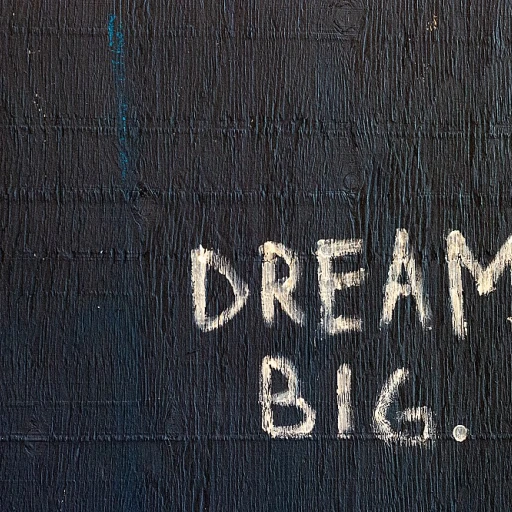The Rhythm of the Economy: Decoding Economic Cycles
Demystifying the Business Cycle: A Harmonic Analysis
Businesses, akin to living entities, pulsate to the ever-present rhythm of the economic cycles. This intrinsic dance is characterized by alternating periods of expansion and contraction, growth and recession, which in aggregate, form the business cycle. Strategic planning is crucial for companies aiming to thrive amidst these predictable yet challenging oscillations. At the heart of these cycles lies a pattern – deciphering this intricate sequence empowers businesses to forecast, adapt, and strategize effectively.
Key Indicators and Time Series Evidence
Turning to tangible aspects, economic cycles are denoted by a set of key indicators, including GDP growth rates, employment figures, and production outputs. Empirical data from the National Bureau of Economic Research (NBER) elucidates the ebb and flow of these metrics over time. For instance, the duration of business cycles in the United States since the 1850s has been approximately five and a half years on average, although recent decades have witnessed elongated cycles.
Dissecting Peaks and Troughs: The Twin Phases
The peak represents the zenith of economic activity preceding a downturn, whereas the trough symbolizes the nadir, as activities begin to rebound. A deep dive into data from the Bureau of Labor Statistics (BLS) reveals the correlation between these phases and the national unemployment rate, delineating the ebb as jobless numbers rise and the flow as they decline.
Unveiling the Economic Pulse: Growth Rate Nuances
The growth rate fluctuation, another critical facet of economic cycles, underscores potential volatility and opportunity for businesses. For instance, data shows that the average expansion following the Great Depression lasted around 35 months, while the average contraction persisted for 18 months, according to the NBER. Variations in these rates can serve as harbingers of structural changes in the economy.
Historical Trends: The Lens of Past Economic Cycles
Looking years ago into the history of economic cycles, it's evident that each phase harbors specific characteristics and challenges. For example, during the Great Depression, the economy witnessed an unparalleled downturn that challenged traditional notions of economic resilience and prompted shifts in monetary and fiscal policy.
Business Cycle Influencers: Fiscal and Monetary Dynamics
An understanding of economic cycles would be incomplete without acknowledging the role of monetary and fiscal policy. Experts like Milton Friedman and his contemporary Edward C. Prescott have deeply influenced our comprehension of these phenomena through seminal works and their roles in shaping federal policy. With the Federal Reserve’s hand on the interest rate lever and the government’s fiscal response, the cycle’s tempo changes, either mitigating or exacerbating economic fluctuations.
Corporate Strategies Across Economic Seasons
Within this continuous movement, businesses must stay attuned to the economic melodies and adjust their approaches. During an upswing, firms focus on expansion strategies, whereas downturns might prompt a switch to cost-control and efficiency improvements. An in-depth analysis of economic indicators enables businesses to make timely decisions, aligning their strategic planning with the market’s cadence.
Growth and Downturns: The See-Saw of Economic Activity
Understanding Economic Dynamics: Unraveling Growth and Downturns
They say life isn't about waiting for the storm to pass, but learning to dance in the rain. In the world of economics, the 'storms' are downturns, and the 'dancing' is how businesses and policy-makers navigate these challenging periods. Economic activity is indeed a see-saw of growth and decline, a fundamental concept for grasping the ebb and flow of currencies, markets, and national wealth.
We observe that during periods of economic growth, consumer confidence tends to soar, commercial activity amplifies, and job creation accelerates. Businesses expand their footprints, innovation thrives, and the Gross Domestic Product (GDP) of nations marks upward trajectories. Such times are marked by a general atmosphere of optimism and the steady buzz of productivity.
Conversely, when the see-saw tips, economic contractions take hold. Sales may plummet, businesses can stall, and the job market often tightens. This phase, known widely as a recession, can lead to a cautious or even apprehensive economic climate. With a finger on the pulse of economic cycles, businesses must brace for these shifts, leveraging data-driven insights to stay resilient.
One particularly insightful report by the National Bureau of Economic Research (NBER) breaks down the complexities of business cycles. According to the Bureau, peaks and troughs are the bread and butter of economic understanding, carving out a narrative of an ever-evolving commercial landscape.
Highlighting the importance of data in these scenarios, utilizing analytics is essential. A sophisticated approach to data interpretation can reveal how analytics and data science supercharge company strategy, allowing for predictive maneuvers that keep businesses one step ahead. By studying data trends, companies can identify the onset of growth spurts or anticipate market downturns, effectively 'weatherproofing' their operations.
Inflation rates also play a leading role in the story of economic rhythms. During times of growth, inflation can edge higher as demand for goods and services increases. To curb overheating, central banks, such as the Federal Reserve in the U.S., may tweak interest rates to temper economic activity. Here, we find ourselves amid the interplay of monetary policy and market dynamics—a dance floor where every step counts.
Global Perspectives: Economic Growth Across Borders
Reviewing economic cycles isn't limited to a single nation's borders. We live in an interconnected world. The economic engine of one country can influence the prosperity of its trading partners. For instance, when the U.S. experienced the Great Depression, the ripple effects were felt globally, altering the economic patterns of far-reaching nations.
A poignant example is Japan's 'Lost Decade,' a period of economic stagnation that sparked scholarly debates and became a case study for recession response strategies. Japan's once-booming economy slumped into a prolonged period of minimal growth and deflation, ushering in significant policy reforms and strategic finessing by businesses attempting to navigate these uncharted waters.
Bringing us closer to present dynamics, examining global economic patterns sheds light on the truths beneath the numbers. Economists once deemed China's double-digit growth rates as exemplary. However, as the Chinese economy matures, a slowdown to more sustainable growth figures suggests a new chapter in Asia's economic narrative.
Employment, output, and industrial activity data become critical factors in constructing a truthful overview of economic health. The Bureau of Labor Statistics and the U.S. Department of Commerce serve up essential figures that form the backbone of economic assessments, providing those gems of data that businesses and policy-makers rely on to chart their courses through calm and storm alike.
Winning the Economic Strategy Game: Employing Data-Driven Insights
In the game of economics, it's not just about surviving the tempest but emerging adept and agile. Strategic incorporation of comprehensive datasets enables businesses and economists to analyze past patterns, project future trends, and evolve with the times. With long-term growth at stake, data becomes the navigator through the fog of market uncertainty.
With every swing of the economic pendulum, opportunities and risks present themselves. The savvy players – those with access to historical data, trend analyses, and economic forecasts – are often the ones who steer their ships deftly towards growth, even in the face of adversity. It's about staying informed, staying nimble, and most importantly, staying the course with an eye on the horizon of economic cycles and trends.
Monetary Musings: The Impact of Interest Rates on Economic Trends
Deciphering the Interest Rate Influence
When it comes to sculpting the contours of economic trends, few instruments wield as much power as interest rates. Central banks, like the U.S. Federal Reserve, orchestrate these rates as a conductor would in an endeavor to maintain harmonious balance within the economy. Hiking interest rates tends to cool off an overheated market, as borrowing becomes more expensive, which can reduce spending and investment. On the flip side, slashing rates can invigorate a sluggish economic pulse by making loans cheaper, thereby encouraging businesses and consumers to spend and invest more vigorously.
Historical trends hint at the gravity of interest rates' impact. Notably, the Federal Reserve's aggressive rate increases in the early 1980s under then-Chairman Paul Volcker were instrumental in curbing rampant inflation but also precipitated a recession. Contrastingly, the low interest rate policies post-2008 recession underpinned a period of sustained economic growth in the United States. This intricate dance between interest rates and economic vitality is not just a matter of academic study but a key factor in strategic dynamics in change management.
The Real Impact on Business and Household Decisions
Shifts in interest rates have palpable effects on household and business decision-making. A report by the Federal Reserve Bank reveals that lower interest rates can lead to increased capital investments by businesses, as they take advantage of cheaper borrowing costs to expand operations or upgrade technology. For households, mortgage and auto loans become more accessible, spurring consumer spending which accounts for a substantial portion of economic activity.
However, the rate of unemployment tends to inversely correlate with interest rates, a phenomenon historically supported by data from the Bureau of Labor Statistics. Lower interest rates can enhance job creation, reducing the unemployment rate, while higher rates often chill hiring, nudging the unemployment figures upwards.
Examining Interest Rates' Ripple Effects
The business cycle is acutely sensitive to the ripples emanating from shifts in interest rates. Increase in rates generally signifies a cooling period, signaling businesses to rein in expansion plans and potentially leading to a contraction phase in the business cycle. Conversely, a decrease in rates might correspond with a burgeoning growth phase, where companies feel emboldened to thrust forward in growth and investments. An understanding of these economic undercurrents is vital for business leaders as they craft long-range plans and anticipate future market conditions.
Furthermore, the long-term effects of interest rate changes can be observed in their influence over asset prices and retirement funds. For instance, low-interest rate environments often spur investors to search for higher yields, sometimes channeling funds into riskier investments. This has implications for the stability and sustainability of pension funds and individual retirement accounts, especially when an eventual rate hike may impact the value of those investments.
Fiscal Footprints: Government Policy’s Role in Shaping Economic Cycles
The Blueprint of Fiscal Policy in Economic Patterns
When it comes to the shape of economic cycles, government intervention through fiscal policy plays a masterful role. Global economic history paints a vivid portrait of how policy measures can either stimulate prosperity or contribute to downturns. Take, for instance, the strong hand of fiscal stimulus in ending the Great Depression or, on a different note, the austerity measures that often exacerbate recessions.
Expert economists such as the National Bureau of Economic Research's (NBER) former president, Martin Feldstein, have extensively charted the ebb and flow of economic cycles in correlation with fiscal policy decisions. The leverage of taxation and government spending is among the fundamental tools used to manage economic activity. A prime example of impactful fiscal policy is the U.S Federal Reserve's reaction to certain economic indicators. In periods where growth begins to stagnate, a decrease in tax rates or an increase in public spending can breathe life into the economy. Conversely, to cool down inflationary pressures, a hike in taxes or a reduction in spending can be the needed antidote.
Navigating through Fiscal Dynamics
Companies must keep their finger on the pulse of such fiscal maneuvers, as these can significantly alter market conditions. A business that anticipates changes in tax structure can better manage its financial planning and capital allocation. Awareness of imminent government spending projects can also herald strategic opportunities.
The Federal Reserve's fiscal actions inevitably ripple through the business cycle. During expansive fiscal periods, when the economy is infused with government spending, businesses often experience increased demand. Yet, when the fiscal tide retreats with budget cuts and increased taxes during contractions, organizations must tighten their belts and realign their strategies to maintain their competitiveness and financial health.
Case in Point: The Stimulus Echo
One need only look at the reaction to the 2008 financial crisis to understand the magnitude of fiscal policy's impact. The U.S Federal Reserve, alongside global counterparts, unleashed an unprecedented wave of stimulus into the market. The strategy not only helped halt the recession but also set the stage for a decade of growth. This showcases how strategic fiscal interventions are critical not just for short-term recovery but also for setting the trajectory of long-term economic trends.
As evidenced by studies like those from the Bureau of Economic Analysis, the quantitative effects of stimulus packages are substantial. Following the 2008 crisis, the United States' stimulus measures contributed to an average annual growth rate surge, which in turn influenced employment rates and overall economic health. This points to the undeniable interconnection between government fiscal decisions and the operational vitality of businesses.
The Domino Effect of Policy on Employment and Industry
Fiscal policy doesn't act in isolation; its fluctuations impact diverse aspects of the economy, including employment rates and industry health. When a government embarks on job creation programs, it can lead to a ripple effect of higher employment, increased consumer confidence, and spending—a boon for business. Alternatively, cuts in public spending can have the opposite effect, at times spiraling into higher unemployment rates.
The reach extends further into specific sectors. Research has indicated differing sensitivities to fiscal policy across industries. For example, construction and defense often see direct impacts from changes in governmental spending due to public infrastructure projects and military contracts.
Unemployment and the Economy: More Than Just Numbers
Deciphering the Unemployment Rate: A True Economic Indicator
When it comes to understanding the ebb and flow of the economy, few metrics are as telling as the unemployment rate. This figure isn’t just a percentage on a report; it’s a real-time snapshot of the workforce and economic vigor. When the unemployment rate trends downwards, it generally signifies that businesses are thriving, leading to an increase in hiring to accommodate growth. On the flip side, a spike in unemployment often flags economic strife, prompting businesses and policymakers to take notice and act.
Peeling Back the Layers of Employment Data
Data from the Bureau of Labor Statistics is vital for companies looking to navigate through the peaks and troughs of economic cycles. Using this employment data, companies can gauge consumer confidence and spending power, which are directly tied to economic growth. It’s a 360-degree view of potential market expansions or contractions. To provide context, during economic dips, the natural rate of unemployment may reflect underlying structural issues within the job market that extend beyond temporary business cycle downturns.
Economic Insights from Rising and Falling Employment Figures
The ripples of changing employment rates impact much more than just day-to-day business operations. They can signal shifts in consumer behavior, altering how companies strategize for the future. For instance, an increasing unemployment rate might lead to decreased consumer spending, which in turn can prompt businesses to freeze hiring or reduce output. Conversely, when employment is on the rise, businesses might invest in new ventures and expand their workforce to meet anticipated consumer demand.
Experts like Edward C. Prescott, who has extensively studied economic trends, emphasize the importance of understanding employment figures in the broader context of economic cycles. His work, alongside other economic theorists, underscores how employment data isn't just a barometer for the current economic climate but also a predictor of future economic activity.
Employment Trends and Sector-Specific Impacts
It’s no secret that different industries experience the highs and lows of economic cycles in varied ways. Consider how the tech industry may continue to see growth despite a general economic slowdown due to its role in driving innovation and efficiency. Understanding sector-specific employment trends helps businesses pivot and adapt their strategies to maintain a competitive edge.
Taking a closer look at historical instances, such as the Great Depression or the more recent Great Recession, reveals that certain sectors may be hit harder than others, influencing overall employment figures. These historical insights are vital for present-day strategists looking to future-proof their businesses.
The International Dimension of Employment Rates
While the focus is often on domestic employment data, international labor trends can be just as influential. Fluctuations in employment rates in significant economies like the United States, Japan, or the European Union have a domino effect on global economic trends. International trade policies, currency exchange rates, and comparative advantages between nations are all influenced by these critical employment metrics.
As economists from institutions like the National Bureau of Economic Research (NBER) and Federal Reserve Bank point out, the interconnectedness of global economies means that employment data can no longer be reviewed in isolation. It forms part of a much larger, interdependent economic puzzle.
Sector Sensitivity: How Different Industries Weather Economic Storms
Industries in the Eye of the Economic Storm
When the tide of the economy ebbs and flows, industries do not brace the waves in uniformity. Take construction and manufacturing, sectors often hit first and hardest during a downturn. Studies point to a preceding drop in these sectors before a recession grips the larger economy, signaling caution to the observant strategist. On the flip side, essential services such as healthcare maintain steadier demand, often buffered against the full force of economic woes.
Expert Analysis on Industry Response
Eminent economists like Edward C. Prescott have examined the behavior of industries across business cycles. Prescott, associated with studies on the real business cycle theory, illustrates how productivity shocks influence economic activity. Following Prescott's insights, a keen strategist can anticipate which sectors may falter or thrive amidst changing economic landscapes. The Federal Reserve Bank plays a pivotal role too, often adjusting monetary policy as a counterbalance during turbulent phases, striving to steady the ship of varied industries.
Case Examples: Paragons of Resilience and Vulnerability
The Great Recession offers a textbook example of sector sensitivity. The real estate bubble's burst dragged construction and finance into the eye of the storm. Conversely, discount retailers saw growth, as consumers turned frugal. These historical narratives are not mere anecdotes but strategic data points for future navigation. The National Bureau of Economic Research (NBER) provides extensive data and analysis on business cycle fluctuations that are vital for such assessments.
The Statistical Landscape
Digging into the data, the Bureau of Labor Statistics (BLS) offers a granular view of employment shifts across industries during economic shifts. The BLS tracks unemployment rate changes, which vary widely by sector during recessions, signaling the uneven impact of economic turbulence. Moreover, Gross Domestic Product (GDP) figures from the U.S. Department of Commerce can serve as a barometer for overall sector output, offering another layer of insight for the data-driven strategist.
Forecasting the Business Weather
Predicting which industries will weather economic cycles successfully involves analyzing long-term growth rates, understanding the monetary policy trajectory from the Federal Reserve, and grasping the nuances of fiscal policy shifts. Those who master this trifecta can position their business to not just survive but thrive, regardless of the imminent economic climate.
The Role of Economic Forecasting in Corporate Strategy
Economic Forecasts as Corporate Strategy Compass
Within the vast and complex world of corporate strategy, forecasting economic cycles is akin to navigating by the stars. It’s a way to anticipate twists and turns in market conditions that could influence company performance. Indeed, adept forecasters can often provide a valuable edge to businesses aiming to outmaneuver uncertainty and capitalize on trends. Real-time data from the U.S. Department of Commerce offers clues about the direction in which the economy might be heading. Plus, the historic Bureau of Labor Statistics figures on employment and consumer pricing help firms predict potential fluctuations.
Melding Economic Indicators with Strategic Initiatives
For those in the strategizing trenches, it’s not just about observing economic cycles—it’s about merging this understanding with business initiatives. When indicators like GDP growth rates, unemployment figures, and inflation levels are married with strategic planning, companies can adjust their sails before the wind changes. Insights from economic thought-leaders like Edward C. Prescott, who co-won the Nobel Prize for his work on business cycles, reinforce the importance of incorporating these elements into corporate stratagem.
Leveraging Technology for Predictive Analysis
Modern businesses have a plethora of data at their fingertips, offering a goldmine for predictive analytics. Leveraging advanced tools, from time series analysis to artificial intelligence, enables companies to distill broad economic data into actionable insights. Studies such as those conducted by the National Bureau of Economic Research (NBER) aid businesses in understanding the phases of the business cycle, and therefore, in tailoring their strategies accordingly to current and anticipated market climates.
Mapping Out Scenarios to Preempt Economic Shifts
Scenario mapping is a critical element in the strategist's toolkit. It considers various economic outcomes—from the bullish to the bearish—and plans for multiple futures. This degree of preparedness can be the difference between flourishing and floundering when the business climate inevitably shifts. Reports from institutions like the Federal Reserve offer pivotal information that affects such planning, particularly regarding interest rates and the federal funds rate—key indicators that influence corporate investment decisions.
Case Study Applications in Strategy Development
Nothing enriches the value of economic data like the study of past business cycles. Delving into case studies, for instance, those examining the strategic moves made during periods like the Great Depression or the dot-com bubble burst, equips business leaders with a clearer understanding of how to navigate future uncertainties. Learning from the mistakes and successes of others is a timeless method for crafting resilient economic strategies.
Final Thoughts on Economic Cycles in Strategy
Wrapping our minds around economic cycles is crucial for corporate strategy creation. It's not just a matter of intellectual curiosity but practical necessity. The ability to anticipate and respond to economic trends goes a long way in sustaining business growth. By staying attuned to economic rhythms and expert insights, businesses can harmonize their strategies with the ebb and flow of global prosperity.
Learning from the Past: Case Studies in Economic Cycles and Business Strategy
Enlightening Insights from Historical Economic Shifts
Peering into the rearview mirror of history, we witness the dramatic ebbs and flows of economic cycles and their profound influence on business strategies. One such monumental period, the Great Depression of the 1930s, offers an enduring lesson in the interplay between macroeconomic forces and corporate decision-making. Milton Friedman, a Nobel laureate in economics, shed light on this era's complexities in his works, particularly 'A Monetary History of the United States,' underscoring how monetary policy can either exacerbate or mitigate economic downturns.
Indeed, the Federal Reserve's tightening of monetary policy during the Depression undeniably compelled businesses to re-strategize. Businesses that survived this tumult adopted a lean operating model, emphasizing cost containment and operational efficiency—strategies that are still pertinent during economic downturns today.
Corporate Resilience in More Recent Times
In recent decades, the dot-com bubble burst of the early 2000s and the financial crisis of 2007-2008 serve as further case studies. During these downturns, companies such as Amazon and Netflix redefined the corporate landscape by pivoting to digital, customer-centric models, showcasing how adaptability and innovation are critical in uncertain economic times.
These examples elucidate a trend: businesses agile enough to shift gears during tumultuous phases of the economic cycle often emerge stronger. The U.S. Department of Commerce's data reveals that sectors like technology and healthcare have historically shown resilience, adapting to the changing demands of the economic environment.
Adjust and Flourish: Learning from Sectoral Triumphs
Reviewing the triumphs of industry leaders across varying sectors, from tech juggernauts to financial institutions, reveals a common thread—their success hinged on recognizing and adapting to the intricacies of the business cycle. The National Bureau of Economic Research (NBER) provides comprehensive studies on the phases of business cycles, offering invaluable insights for companies strategizing for longevity.
For instance, the Federal Reserve Bank's analyses have repeatedly underscored the importance of long-term growth prospects over short-lived gains. As such, companies like Japan's Toyota have thrived by focusing on sustainable growth business models, integrating innovation while maintaining a baseline that guards against the unforeseen shocks that are characteristic of typical business cycles.
Tackling Economic Forecasts with Strategic Foresight
Lastly, incorporating economic forecasting into business strategy is not just a matter of crunching numbers, but a strategic initiative that demands insight and nuance. The Princeton University Press highlights how economic models and forecasting tools can be instrumental in business planning. These resources equip leaders with the foresight to steer their organizations through the ups and downs of economic cycles, ensuring they are not left in the wake of those who effectively use history as their guide.














